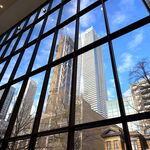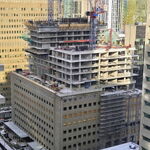sunnyraytoronto
Senior Member
When I said NYCC should be destination I meant that it should attract more pull from York Region and Toronto. It's one of the few successful mini downtowns. The large problems are the traffic is horrendous there because it's mostly used as a through route from 401 to York Region. The aim of the project is to make the area nicer for the local residents and more pleasant a place to walk, bike. Mel Lastman Square is well used but it's a hoge poge of a square. The space is very segmented and doesn't flow together at all.
A destination isn't just limited to just one street; thus project expanding to include more streets.
The problem is some (Jennifer Keesmaat and Ken Greenberg) think North York Centre is a "mini downtown" area where reducing traffic/parking lanes causing more traffic congestion,... will eventually force people to cycle more,... but that's impossible for this area. (We already have the worst gridlock traffic congestion in the city,... but our cycling mode share is 1/3 city-wide average!)
Just because North York Centre has a cluster of towers doesn't mean it's a "mini downtown" area,... since amalgamation, there's been 60 new residential towers built in North York Centre but only one office tower,.... North York Centre is a vertical sleeping community,.... with the net flow of traffic going out in the morning! 70% of southbound Yonge traffic ends up on Highway 401 where no bikes are allowed and the other 30% ends up in the valley - good luck riding up those hills! Then consider commuter distance is generally outside the 1-4km cycling sweet-spot. This makes commuter cycling in the area basically impossible! Now, guess where NYCC northbound Yonge traffic comes from?
I do agree with "The aim of the project is to make the area nicer for the local residents and more pleasant a place to walk, bike.",... jog, roller-blade, hang out, play, shop, dine, etc,... go to next 2 community consultation meeting (late summer early fall) and you should see better safer more inclusive active infrastructure solution (rings) that'll actually improve area's public realm space by allowing increase in net walkable pedestrian sidewalk space on Yonge, enhance local park system and encourage locals and workers to stay in area instead of making a bee-line out,... all this can be done without eliminating any traffic/parking lanes on Yonge or ring roads!
Last edited:





